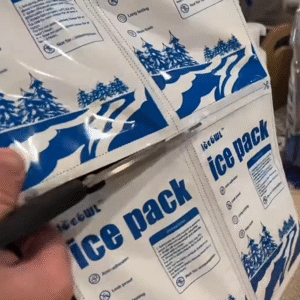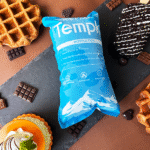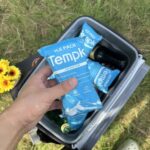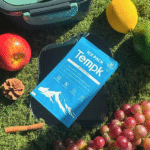Loja próxima de pacotes de gelo seco: Como você escolhe os certos?
Introdução
Se você precisar nearby store dry ice packs rápido, this guide helps you choose the right size, stay safe during transport, and keep goods at target temperatures. You’ll get a simple sizing method, a safety checklist, e 2025 buying tips that fit your timeline and budget. Use the tools below to pick the ideal format for food, amostras de laboratório, camping, or emergency cooling without guesswork.
-
Which retailers carry nearby store dry ice packs e o que perguntar no balcão
-
Quantos nearby store dry ice packs you need for your cooler duration
-
How to handle nearby store dry ice packs safely in cars and small spaces
-
When to pick pellets, blocos, ou híbrido nearby store dry ice packs
-
Como nearby store dry ice packs compare to gel packs and reusable ice bricks
-
2025 price drivers and availability for nearby store dry ice packs
Where can you buy nearby store dry ice packs today?
Resposta direta
Most shoppers find nearby store dry ice packs at large grocers, party and beverage outlets, selected pharmacies, and hardware stores. Ask customer service for availability, formatos (Pellets vs.. blocos), and bag sizes. Many locations store packs in back-room coolers for safety. Bring insulated gloves or a towel for handling, and confirm pickup rules (some stores limit quantities for safety or require an ID check).
Explicação expandida
Da sua perspectiva, speed matters: you want nearby store dry ice packs you can grab within minutes. Call ahead and ask two questions: “Do you have bagged dry ice packs or loose pellets?” and “What sizes are available?” For road trips or last-mile deliveries, a single stop that sells both packs and foam coolers can save time. If a grocer is out, nearby party stores that sell kegs or CO₂ cartridges often stock nearby store dry ice packs as well. During holidays and heat waves, supply tightens—arrive early and consider two smaller bags rather than one large block to improve surface contact in your cooler.
Which size of nearby store dry ice packs should you choose?
Detalhes
When your load is small and time is short, pellets give more contact area and quicker pull-down; Os blocos duram mais. For fragile items (por exemplo, berries or vaccine kits), place a cardboard or towel buffer between nearby store dry ice packs and the product to prevent freeze damage. For airline or parcel rules, check container venting requirements; never use an airtight cooler with dry ice.
| Tipo de embalagem & Usar | Formato típico | Hold-Time Behavior | O que isso significa para você |
|---|---|---|---|
| Pellets/“rice” for fast cooling | Small granules | Faster initial cooling, shorter total duration | Best when you must chill quickly before a short drive |
| Medium “brick” packs | Wrapped packs | Balanced surface contact and duration | Good all-round choice for day trips |
| Bloco sólido | 5–10 lb block | Início mais lento, duração mais longa | Choose for overnight or multi-day hold times |
Dicas e sugestões práticas
-
Quick grocery pickup: Ask for “bagged dry ice” or “dry ice packs” at customer service; many stores keep bags behind the counter.
-
For long drives: Use a foam or hard cooler with a small vent gap; lugar nearby store dry ice packs on top so cold air sinks.
-
For fragile foods: Add a corrugated layer to avoid contact freezing; check every 60–90 minutes.
Caso real: A weekend caterer used 10 lb of pellet-style nearby store dry ice packs in a 45‑quart cooler for a 6‑hour highway delivery. With a cardboard divider and periodic venting, desserts arrived fully set with no ice crystal damage.
How do you transport nearby store dry ice packs safely?
Resposta direta
Ventilation is non‑negotiable when moving nearby store dry ice packs. Carbon dioxide gas displaces oxygen; crack car windows and avoid sealed trunks. Use luvas isoladas, never store packs in airtight containers, and keep them away from kids and pets. Place packs in the cooler last, deixe uma abertura de ventilação, and secure the cooler to prevent shifting.
Explicação expandida
Think of dry ice as a slow‑release CO₂ source. In small cars or vans, fresh air flow reduces risk and keeps you comfortable. A slightly ajar window and a vented cooler prevent pressure build‑up. If you smell no odor, that’s normal—CO₂ is odorless; rely on good ventilation, not smell. Com nearby store dry ice packs, your “safe setup” is simple: a vented lid, a buffer layer over food, and a driving plan that avoids cabin heat spikes. If you stop for more than 10 minutos, recheck ventilation and cooler vents.
Safe handling and PPE for nearby store dry ice packs
Detalhes
Insulated gloves or a thick towel protect against cold burns. Eye protection helps when breaking blocks into smaller pieces. Avoid placing nearby store dry ice packs directly on metal car floors; use cardboard to reduce condensation and prevent sticking. Keep packs upright in the cooler, and don’t tape lids shut—gas needs a way out.
| Etapa de segurança | Por que isso importa | Simple How-To | Beneficiar para você |
|---|---|---|---|
| Ventile o veículo | CO₂ desloca o oxigênio | Rachaduras nas janelas de 2–3 cm | Reduces headache, keeps you alert |
| Ventile o refrigerador | Gas pressure builds | Loosen latch or use a vented lid | Prevents deformation or lid pop |
| Use hand protection | Risco de queda de gelo | Insulated gloves or folded towel | Safe loading and rearranging |
Dicas e sugestões práticas
-
During long stops: Move the cooler to a shaded, ventilated spot and keep the lid vented.
-
Em casa: Deixar nearby store dry ice packs sublimate in a secure, ventilated area out of reach of children and pets.
-
Em elevadores ou armários: Avoid use—choose open, airy spaces instead.
Caso real: A mobile lab driver adjusted vents and used a foam cooler with a 3 mm gap while hauling nearby store dry ice packs por quatro horas. CO₂ readings stayed in the safe range, and the cooler lid never bulged.
Do nearby store dry ice packs keep food, vacinas, or samples cold enough?
Resposta direta
Yes—when sized correctly, nearby store dry ice packs can keep contents well below freezing, even at 0–5°C or colder for hours to days. The key is matching pack mass to cooler size, temperatura ambiente, e tempo de espera alvo, plus using a buffer layer to prevent direct freeze damage on sensitive goods.
Explicação expandida
Food wants consistency; lab samples often need very cold conditions. Pellets and small packs provide fast pull‑down for a quick grocery run; blocks carry you overnight. To protect produce and delicate items, place paper, cartão, or a towel on top of nearby store dry ice packs. For sub‑zero targets, more pack mass helps. For cheese or chocolate, a mixed strategy—one small pack near a thin divider—often avoids surface cracking.
Estimate hold time vs. temperatura ambiente
Detalhes
Como regra geral, start with 5–10 lb of nearby store dry ice packs for a 35–50 quart cooler for a full day, then adjust by climate and how often you open the lid. Hotter days, larger coolers, and frequent lid openings require more mass. Use pellets for fast chill, blocos para duração, ou um híbrido.
| Caso de uso | Faixa ambiente | Starting Pack Mass | O que isso significa para você |
|---|---|---|---|
| Day trip frozen foods | 20–28°C | 5 lb in 35–45 qt | Frozen to the end of the day |
| Overnight camping | 18–25ºC | 8–12 lb in 45–60 qt | Frozen through breakfast |
| Multi‑stop delivery | 25–32°C | 10–15 lb in 50–70 qt | Buffer for frequent lid opens |
Dicas e sugestões práticas
-
Para cargas mistas: Keep raw meats below a divider and nearby store dry ice packs above the divider.
-
For lab kits: Pre‑chill the cooler 10–15 minutes with a handful of pellets before loading.
-
For produce: Use a breathable buffer to avoid contact freezing.
Caso real: A chocolatier paired one 5 lb block with a towel buffer and two small pellet bags. After six hours of city deliveries, bonbons stayed glossy with no bloom.
How do nearby store dry ice packs compare to gel packs and reusable ice?
Resposta direta
Nearby store dry ice packs deliver lower temperatures and longer hold time per pound versus gel packs, but they require venting and gloves. Gel packs are safer for above‑freezing targets, while reusables are convenient for frequent, viagens curtas. Choose dry ice when you need genuine frozen conditions or rapid pull‑down.
Explicação expandida
Think of cooling like tool selection: dry ice is a power tool for freezing; gels and reusables are hand tools for chill. If your product shouldn’t freeze, gels shine. If you must keep items rock-solid or reach below −18°C quickly, nearby store dry ice packs ganhar. You can even combine them: a small dry ice pack for fast pull‑down plus gel packs to smooth temperature swings at the product surface.
When not to use nearby store dry ice packs
Detalhes
Skip dry ice for items harmed by deep cold (folhas verdes, some meds), in unventilated spaces, or where regulations require specific refrigerants. If you only need 1–2 hours at fridge temps, gel packs are simpler and still effective.
| Opção de resfriamento | Temperatura alvo | Prós | Seu take -away |
|---|---|---|---|
| Nearby store dry ice packs | Sub‑zero to deep freeze | Pull -redone rápido, longa duração | Best for frozen goods and dry shipments |
| Pacotes de gel | 0–8 ° C. | Safe for delicate items | Ideal for chilled but not frozen |
| Reusable bricks | 0–10ºC | No purchase each trip | Great for routine short runs |
Dicas e sugestões práticas
-
Cargas híbridas: Use one small bag of nearby store dry ice packs to start, then rely on gels to avoid over‑freezing.
-
For medication: Check label storage ranges; if it says “do not freeze,” choose gels.
-
For flowers: Avoid dry ice; use chilled water packs instead.
Caso real: A meal‑prep service cut spoilage by combining two 2 Libra nearby store dry ice packs with four gel packs and a corrugated divider, keeping entrées firm without frost.
What size and quantity of nearby store dry ice packs do you need?
Resposta direta
A quick planner works: tamanho mais frio + calor ambiente + Tempo de espera + how often you open the lid. Start with 0.2–0.3 lb of nearby store dry ice packs per quart of cooler volume for a full day in moderate weather, then adjust up for heat or frequent access.
Explicação expandida
You want enough mass to outlast heat leaks. The rules below prioritize simplicity and speed over engineering detail. Para refrigeradores maiores, use at least one block plus pellets to fill voids. For frequent openings, adicione 25–50% a mais nearby store dry ice packs para permanecer seguro.
“Dry Ice Pack Picker” — quick interactive checklist
Copy this checklist into a note and mark your choices:
-
Tamanho mais frio: <35 Qt / 35–50 qt / 50–70 qt / >70 Qt
-
Hold time target: 6 h / 12 h / 24 h / 36+ h
-
Ambient forecast: legal (<22°C) / esquentar (22–28°C) / quente (>28°C)
-
Lid openings per hour: 0–1 / 2–4 / 5+
-
Load type: robust frozen / delicate frozen / chilled only
Recommended starting mass:
-
35–50 qt, 24 h, warm weather, 2–4 openings/hr → 8–12 lb of nearby store dry ice packs
-
50–70 qt, 24 h, clima quente, 5+ openings/hr → 15–20 lb of nearby store dry ice packs
-
Adicionar 25% for delicate goods (use extra buffering)
Simple estimation helper (pseudocode)
Dicas e sugestões práticas
-
Preencher vazios: Pack items tight; air gaps waste cold.
-
Camadas: Product at bottom, buffer, então nearby store dry ice packs no topo.
-
Checkpoints: Plan lid checks every 2–3 hours to adjust buffers.
Caso real: A fishing crew used the pseudocode for a 60 qt cooler in hot weather with frequent access. The tool suggested ~18 lb; they used 16 lb plus a towel buffer and returned with firm fillets and no melting.
How much do nearby store dry ice packs cost in 2025, and what affects price?
Resposta direta
Expect prices to vary by region, temporada, e formato. You’ll often see per‑pound pricing with discounts for larger bags or multi‑packs. Blocks may carry a small premium for longer hold time; pellets and small packs trade a bit of duration for faster cooling and lower per‑stop cost.
Explicação expandida
Em 2025, local CO₂ supply and energy costs remain the biggest drivers. Ondas de calor, fins de semana prolongados, and event seasons can tighten stock for nearby store dry ice packs. If you’re price‑sensitive, call two stores, ask for “current bag size and price,” and ask if they’ll hold packs at the counter for same‑day pickup. Buying a tad more mass than you think you need often costs less than an emergency second trip.
Price drivers you can manage
Detalhes
You can’t control regional CO₂ capture or deliveries, but you can plan. Shop earlier in the day, use a right‑sized cooler, and reduce lid openings. For regular routes, keep a simple log of how many nearby store dry ice packs you used at what temperatures to fine‑tune future buys.
| Motorista | What Changes | Sua jogada | Benefício prático |
|---|---|---|---|
| Season/holidays | Demand spikes | Buy early or reserve | Better availability |
| Formatar | Block vs pellets | Match to duration | Avoid overbuying |
| Store type | Grocer vs party/hardware | Ligue com antecedência | Fewer wasted trips |
Dicas e sugestões práticas
-
Ask for “back stock”: Many stores keep nearby store dry ice packs behind the counter.
-
Reserve on the phone: Some retailers will hold a labeled bag for pickup.
-
Track your usage: Keep a quick log per trip; optimize next time.
Caso real: A photographer learned that a party store near the venue restocked every morning. Calling ahead secured two block packs during a citywide heat wave.
Sustainability and disposal: how do you handle nearby store dry ice packs responsibly?
Resposta direta
Let nearby store dry ice packs sublimate in a well‑ventilated area, out of reach of children and pets. Do not dump dry ice in sinks, banheiros, or storm drains; rapid freezing can crack surfaces and create hazards.
Explicação expandida
Responsible handling is simple. Place the remaining packs on a cardboard tray in an airy space and allow them to disappear naturally. Keep them away from enclosed rooms and never cap them in sealed containers. For regular users, consider re‑usable dividers and right‑sized coolers to reduce total dry ice mass needed per trip.
Pequeno, practical sustainability wins
Detalhes
Right‑sizing reduces waste. Logs help you buy only what you need. A reusable divider protects products so you can use fewer nearby store dry ice packs without risking freeze damage.
| Ação | Easy Step | Resultado | Significado para você |
|---|---|---|---|
| Buy right-sized bags | Use mass estimator | Fewer leftovers | Custos mais baixos, menos desperdício |
| Reuse buffers | Keep towels/cardboard | Better control | Less product damage |
| Air-dry disposal | Ventilated space | Safe sublimation | No plumbing damage |
Dicas e sugestões práticas
-
Post-trip routine: Put leftover nearby store dry ice packs in a ventilated shed corner to sublimate.
-
Sem recipientes selados: Gas needs an exit path—always.
-
Child and pet safety: Sublimation area must be off-limits.
Caso real: After a two‑day festival, a vendor placed leftover packs on a metal tray in a fenced, breezy area. By morning, they were gone with no mess.
2025 trends for nearby store dry ice packs
Visão geral da tendência
Em 2025, retailers have broadened point‑of‑sale signage and back‑room storage protocols for nearby store dry ice packs, especially during heat events. More stores offer pre‑bagged pellet options for fast pickup, and service counters are increasingly trained to advise on basic handling. On the cooler side, lighter lids with built‑in vents make safe transport simpler for everyday drivers.
Últimos desenvolvimentos de vista
-
Embalagem híbrida: Combining small pellet bags with a single block pack improves both pull‑down and duration.
-
Refrigeradores mais inteligentes: Vented‑lid and latch‑gap designs reduce pressure build‑up risks when using nearby store dry ice packs.
-
Front‑of‑store guidance: More retailers use quick “how to load” cards at pickup points.
Insights de mercado
Demanda por nearby store dry ice packs spikes in urban heat waves and during summer events, while shoulder seasons see steadier supply. Consumers favor convenience—pre‑bagged sizes and curbside pickup—over custom cutting. Para pequenas empresas, route logs and simple estimators are becoming standard practice to right‑size orders and avoid returns or secondary runs.
Perguntas frequentes
Q1: How long will nearby store dry ice packs last in a 45‑quart cooler?
Typically a full day with 8–10 lb in moderate weather, longer with blocks and fewer lid openings. Pre‑chill if possible and use a buffer to protect delicate items.
Q2: Can I use nearby store dry ice packs for medications that say “do not freeze”?
Não. Choose gel packs aimed at 2–8°C. Dry ice risks freezing; it’s better for frozen goods and deep‑cold targets.
Q3: Are nearby store dry ice packs safe in a sedan trunk?
Evite espaços fechados. Keep the cooler in a ventilated cabin with a cracked window or use a vented pass‑through. Never block the cooler vent.
Q4: Pellets or blocks—what should I buy as a first‑time user?
Start with pellets or small packs for control and speed. Add a small block if you need overnight hold times.
Q5: How do I prevent freezer burn when using nearby store dry ice packs?
Adicione uma barreira: toalha, cartão, or a purpose‑made divider. Keep sensitive foods below the divider and packs above.
Q6: What if the store is out of nearby store dry ice packs?
Try party supply, bebida, or hardware stores. Ligue com antecedência; many keep bags behind the counter and will hold them for pickup.
Q7: Will nearby store dry ice packs crack my cooler?
Use a vented lid or slight latch gap. Pressure rises in sealed containers; venting prevents deformation or cracks.
P8: Can I fly with nearby store dry ice packs?
Airline rules vary by route and container venting. Check current carrier policies and label the package if required.
Resumo e recomendações
Pontos -chave
Usar nearby store dry ice packs when you need fast pull‑down and true frozen conditions. Size packs to cooler volume, clima, frequência de acesso, e duração. Vent vehicles and coolers, protect products with simple buffers, and plan disposal in a ventilated area.
Plano de ação
-
Escolha seu formato (Pellets para velocidade, blocos para duração). 2) Use the quick estimator to set a starting mass. 3) Layer product, buffer, então nearby store dry ice packs. 4) Ventilação durante o transporte. 5) Log what worked to refine your next trip. Precisa de um plano personalizado? Contact Tempk for a quick sizing consult.
Sobre Tempk
We are a cold chain solutions team focused on practical field results. Our guidance blends operational simplicity with data‑driven heuristics. We design tools and checklists that help you choose and use nearby store dry ice packs eficientemente, with two concrete advantages: quick mass estimators you can apply on the spot, e configurações de embalagem que reduzem o desperdício sem arriscar a qualidade do produto.
Chamado à ação: Speak with Tempk for sizing help or an audit of your cooler workflow.
























